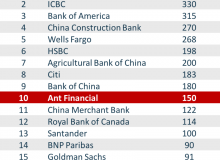“Oh dear, I thought Macs never crashed!” was the reaction of an amazing coach who shall remain nameless…
As you know, I’m not a tech blogger, and this has nothing to do with Fintech… But then many Disruptive Finance readers are Mac users. And since I spent much more time trying to upgrade to El Capitan than writing any piece for the blog, I thought I would spend an extra 30 minutes to share my experience…
Here is my experience of 4 nights trying to upgrade to El Capitan, then trying to sort out the mess, then trying to downgrade, then trying to recover a dead Mac…
Night One: Upgrading to El Capitan: easy peasy
First, why did I want to upgrade to El Capitan? I was on OS X Mountain Lion, and perfectly happy. I’m not a gamer, so use my Mac mainly for emails, Internet, blogging, Excel, Mac and pictures. So a very basic user who just wants his simple applications to work.
Now, for some reason, I read that El Capitan would make make your Mac run faster, and I thought why not? I therefore went to the App Store, downloaded El Capitan and let it to its stuff. So far, very uneventful.
Night Two: Mail doesn’t work anymore!
When I start using my Mac again in the evening, it has successfully upgraded to Mac OS El Capitan. So far, so good. I like the design of the new desktop, but apart from that it seems to behave in exactly the same way as the previous OS. And it does seem faster than Mac OS X Mountain Lion (or is it just wishful thinking?).
But then, as I open Mail, I immediately realise that there is something strange: my Smart Mailbox do not display all my emails anymore. For example, I have a Smart Mailbox that shows all the emails received during the last week (from any account). Instead of having hundreds of emails, it has less than 10. And then the search function in Mail does not work either – can just find random email from Search…
A quick search on Google shows me that many other people had the same problem, and then my next few hours were spent doing all the things that people tried to do (here, here, here, here and here!). If you are having the same issues, know that I did all of the following (and more!):
– Restarted computer and mail
– Rebuilt the mailboxes
– Updated the envelope index
– Re-created the spotlight index
– Downloaded Onyx and had it rebuilt all the database, etc.
Nothing worked! I still couldn’t use Mail properly! If you’re like me and use Smart Mailbox and the search function, then you’ll understand how frustrated I was. So end of Night Two, I could receive emails, but had to go to individual mailboxes to read my emails – in other words, couldn’t work with El Capitan.
Night 3: I am gutted! Downgrade back to OS X Moutain Lion…
It took me a while to find a solution. First, I was thinking of replacing Mail by another application such as Postbox. But then I also have a lot of mails which are not in IMAP, but in POP, and didn’t really want to have to migrate all of these. After spending a bit more time trying to solve the issue, and accepting that I was going nowhere, I saw the light! Since I’m very diligent with Time Machine, I would just downgrade back to a previous state of my Mac – one with OS X Moutain Lion.
I had a bit of a doubt that you could revert back to a previous OS, but it’s actually quite simple: launch the Mac, press Command-R, and then it gives you the option to use any Time Machine backups. So here I go, I launch Time Machine and go to sleep.
The morning after Night 3: my Mac is dead!
All good then, the Mac runs overnight, and in the following morning I see the message that Time Machine has been fully restored, and the computer should restart.
It restarts, and then nothing happens. Or actually, what happens is a blank screen with a flashing question mark... If you don’t know what it is – which I didn’t – then Google “Mac with flashing question mark” and then you’d realise that it’s not very good.
That, I understood quite quickly, because I shut down and restarted the computer a few times, and always with the same result. And what was worse is that the recovery mode of Command-R, or Command-CTRL-R didn’t work anymore!
So now I had gone from a fully functioning Mac with OS X Lion to a Mac with an unusable email to a dead Mac – great progress in three short days!
Since I had to leave for work, there was not much more I could do, except calling the Apple Support and getting a Genius (from the Genius bar to help)…
Something you will never guess though: what do you need to call the Apple support? You need the serial number of your Mac. Where do you find it? You guessed it: you need to switch on your Mac! I thought I was going crazy, impossible to call Apple Support because their online help would not let me go through without the serial number!
So just for a bit of fun, if you have an iMac, look at your iMac and try to find the serial number… If after 5 minutes and a magnifying lens you haven’t found it, then look UNDER the stand of your Mac and you’ll find it. Obvious no?
After finding the S/N of the Mac, I finally managed to contact Apple Support that confirmed that there was nothing to do, and that I should bring my Mac for repair at an Apple Center. With the only problem that they were fully booked in all their stores for Central London, but that I should try to log into their systems every hour as new bookings would become available…
Night 4: I am a Genius! I restored my Mac!
Since I was not keen to wait for weeks to repair my Mac – and I have a day job too, so can’t spend all my time going to computer stores! – I decided to think outside the box.
Since my Mac was dead – or at least its hard drive-, what was the option? Obviously, I would need to boot from an external drive. And obviously I had not created an external boot drive. So I decided to create an external boot drive from my other Mac. Which in theory is quite easy, you just need to download OS X El Capitan and copy it to the external drive.
While that process was going on – it really takes hours! – I had nothing else to do that switch off, restart my Mac, play with it through Command-CTRL-R, etc. and then a miracle happened! The Mac entered into recovery mode. I was then able to repair the disk, and managed to get back to my previous version of OS X Mountain Lion. So even if Command-CTRL-R does not work the first time, I would definitely advise trying many times…
CONCLUSION
As they say, an ounce of prevention is worth a pound of cure… This is something you tend to forget, but I can tell you that I would have saved a lot of time and energy if I had done the following :
Prevention:
– Always have a bootable hard drive, and preferably a clone of your hard drive. It means that if for some reason your hard drive dies, or an installation went badly wrong, you can boot directly from an external hard drive and try to repair your hard drive. For that, I used Get Backup, but it seems that Carbon Copy Cloner and Super Duper are the most popular. Store that hard drive in a safe place.
– Use Time Machine on another external hard drive. That allows to have the most recent changes constantly updated. This hard drive would always be connected to your Mac.
– Install Onyx to rebuild your system from time to time. I’ve just started to use it, but it seems to enhance the computer quite well.
Cure:
– If your mail has issues with Smart Mailbox or Search, then Onyx seems to do all the things that you find in the forums (rebuild spotlight, the enveloppe index, etc.). So it might work – or not.
– Command-R or Command-CTRL-R is now my favourite shortcut! It allows to reboot in the recovery mode, which might help or not.
Upgrading to OS X El Capitan:
– Think before you act!
– Obviously I’m a bit biased, because my experience went very badly. But if you do upgrade, then be sure you’ve gone through all the steps above…
Please share this post if you find it useful.
Follow me on Twitter here







